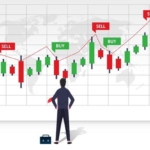What is Market Capitalization
Understanding Market Capitalization
Market capitalization, short for market cap, refers to the total worth of a company’s outstanding shares of stock.
Simply put, it tells us how much it will cost to buy the entire company at the current share price.
How is the market cap calculated?
It is computed by multiplying the current market value of each share of the company by the number of outstanding shares. Here, the outstanding shares refer to the shares held by the stockholders, company officials, and public investors.
Market capitalization = Outstanding shares x current market share price
And the current share price is the last traded price of the company on the stock exchange. It is, of course, determined by the public based on numerous criteria such as the company’s performance, demand for the company’s shares, the company’s profitability, past trends, future estimates of the company’s performance, and so on.
For a better understanding, consider the following illustration. Britannia Industries Limited, for example, currently has approximately 24,10, 22,851 shares outstanding. And, as of today, the current share price is 3676 INR, bringing the market valuation to around 886 billion INR.
Why is market capitalization important?
Market capitalization is frequently utilized as a starting point for analysis because all other financial measures must be seen through this lens. With a greater understanding of the market capitalizations of various companies, investors may make more informed selections about the types of stocks they want in their portfolios based on their investing goals.
Market capitalization is significant because it allows investors to forecast the future performance of a company’s stock as it reflects what the market is willing to pay for the shares. The market capitalization of a corporation indicates its size.
Fluctuations in market capitalization
Change in stock price
Market capitalization fluctuates on a daily basis because it is directly related to a company’s stock price. As a stock’s price rises, so do its market capitalization, and vice versa. Stock prices can fluctuate for a variety of reasons, including the company’s reliability and reputation, past performance and forecasts, demand for the company’s products, and so on.
Change in outstanding shares
Changes in the number of outstanding shares also have an impact on market capitalization. Companies may issue new shares to raise capital or to buy back shares. Assuming a fixed share price, issuing shares increase market capitalization while purchasing them decreases it.
However, a stock split or dividend usually does not change the market cap. Because the number of shares outstanding has grown as a result of the split, the stock price will fall.
Categories of Market capitalization
Companies are classed as large-cap, mid-cap, or small-cap based on their market capitalization. These classifications can also assist investors in selecting the best stocks for their investment objectives and risk tolerance.
- Large-cap Companies with a market value of 7000 to 20,000 crores. These businesses have often been in existence for a long time and are key participants in well-established industries. These companies often reward investors with a sustained increase in share value and dividend payments over time. ITC, Reliance industries and HCL tech among many others are examples of large-cap firms.
- Mid-cap Companies typically have a market valuation of between Rs. 500 to Rs. 7000 crores. Mid-cap corporations are well-established businesses that engage in an industry that is predicted to grow exponentially. Mid-cap firms are in the process of growing. They are riskier than large-cap companies since they are less established, but they are appealing because of their potential for growth. Crompton Greaves Consumer Electricals is an example of a mid-cap corporation.
- Small-cap Companies with a market capitalization of less than 500 crores. These small businesses may be younger, or they may serve niche markets or new industries. Because of their age, the markets they serve, and their size, these companies are considered higher-risk investments.
Smaller organizations frequently offer more prospects for growth than larger corporations.
Risks can be reduced by balancing the portfolio with a good combination of all of these. A conservative investor would prefer large-cap stocks. Small-caps may be a better bet if you want to take a risk. Mid-caps may be the way to go if you want to have a balanced portfolio with both appreciation and income.
Final Thoughts
Market capitalization can be a useful tool for investors who are tracking stocks and considering potential investments. The market cap is used in acquisitions to analyze whether a takeover candidate represents a good value to the acquirer.
Companies with lower market capitalization values are risky, but they can pay out handsomely. Companies with larger market capitalizations are more likely to keep your money, but they may not provide huge returns.
Market capitalization is fundamentally the public’s opinion of a company’s worth. It may be a good indicator of a company’s size, but it is surely not the ideal measure for determining a company’s worth.
Howdy!
If you’re here for the first time, let’s get introduced.
VRD Nation is India’s premier stock market training institute and we (Team VRD Nation) are passionate about teaching each and every aspect of investing and trading.
If you’re here for the first time, don’t forget to check out “Free Training” section where we have tons of free videos and articles to kick start your stock market journey.
Also, we got two awesome YouTube channels where you can continue the learning process.
Must-Read Articles
What is Market Capitalization
Understanding Market Capitalization
Market capitalization, short for market cap, refers to the total worth of a company’s outstanding shares of stock.
Simply put, it tells us how much it will cost to buy the entire company at the current share price.
How is the market cap calculated?
It is computed by multiplying the current market value of each share of the company by the number of outstanding shares. Here, the outstanding shares refer to the shares held by the stockholders, company officials, and public investors.
Market capitalization = Outstanding shares x current market share price
And the current share price is the last traded price of the company on the stock exchange. It is, of course, determined by the public based on numerous criteria such as the company’s performance, demand for the company’s shares, the company’s profitability, past trends, future estimates of the company’s performance, and so on.
For a better understanding, consider the following illustration. Britannia Industries Limited, for example, currently has approximately 24,10, 22,851 shares outstanding. And, as of today, the current share price is 3676 INR, bringing the market valuation to around 886 billion INR.
Why is market capitalization important?
Market capitalization is frequently utilized as a starting point for analysis because all other financial measures must be seen through this lens. With a greater understanding of the market capitalizations of various companies, investors may make more informed selections about the types of stocks they want in their portfolios based on their investing goals.
Market capitalization is significant because it allows investors to forecast the future performance of a company’s stock as it reflects what the market is willing to pay for the shares. The market capitalization of a corporation indicates its size.
Fluctuations in market capitalization
Change in stock price
Market capitalization fluctuates on a daily basis because it is directly related to a company’s stock price. As a stock’s price rises, so do its market capitalization, and vice versa. Stock prices can fluctuate for a variety of reasons, including the company’s reliability and reputation, past performance and forecasts, demand for the company’s products, and so on.
Change in outstanding shares
Changes in the number of outstanding shares also have an impact on market capitalization. Companies may issue new shares to raise capital or to buy back shares. Assuming a fixed share price, issuing shares increase market capitalization while purchasing them decreases it.
However, a stock split or dividend usually does not change the market cap. Because the number of shares outstanding has grown as a result of the split, the stock price will fall.
Categories of Market capitalization
Companies are classed as large-cap, mid-cap, or small-cap based on their market capitalization. These classifications can also assist investors in selecting the best stocks for their investment objectives and risk tolerance.
- Large-cap Companies with a market value of 7000 to 20,000 crores. These businesses have often been in existence for a long time and are key participants in well-established industries. These companies often reward investors with a sustained increase in share value and dividend payments over time. ITC, Reliance industries and HCL tech among many others are examples of large-cap firms.
- Mid-cap Companies typically have a market valuation of between Rs. 500 to Rs. 7000 crores. Mid-cap corporations are well-established businesses that engage in an industry that is predicted to grow exponentially. Mid-cap firms are in the process of growing. They are riskier than large-cap companies since they are less established, but they are appealing because of their potential for growth. Crompton Greaves Consumer Electricals is an example of a mid-cap corporation.
- Small-cap Companies with a market capitalization of less than 500 crores. These small businesses may be younger, or they may serve niche markets or new industries. Because of their age, the markets they serve, and their size, these companies are considered higher-risk investments.
Smaller organizations frequently offer more prospects for growth than larger corporations.
Risks can be reduced by balancing the portfolio with a good combination of all of these. A conservative investor would prefer large-cap stocks. Small-caps may be a better bet if you want to take a risk. Mid-caps may be the way to go if you want to have a balanced portfolio with both appreciation and income.
Final Thoughts
Market capitalization can be a useful tool for investors who are tracking stocks and considering potential investments. The market cap is used in acquisitions to analyze whether a takeover candidate represents a good value to the acquirer.
Companies with lower market capitalization values are risky, but they can pay out handsomely. Companies with larger market capitalizations are more likely to keep your money, but they may not provide huge returns.
Market capitalization is fundamentally the public’s opinion of a company’s worth. It may be a good indicator of a company’s size, but it is surely not the ideal measure for determining a company’s worth.
Key Takeaways
1- Insider trading refers to buying and selling securities (e.g. stocks) based on confidential information that is not available to general public
2- Every year, there are several cases of insider trading that come to light and there are hundreds more that go unnoticed.
3- SEBI (our stock market regulator) has been getting strict about dealing with insider trading.
4- SEBI has made insider trading punishable by imprisonment up to 10 years or a fine upto 25 crores














Leave A Comment